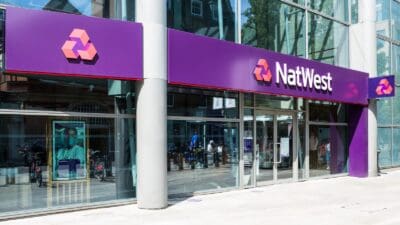Making stock market selections are never black-and-white decisions, and investors often have to plough through a mountain of conflicting arguments before coming to a sound conclusion.
Today I am looking at Royal Bank of Scotland Group (LSE: RBS) (NYSE: RBS.US), and listening to what the angel and the devil on my shoulders have to say about the company.
Earnings expected to explode
Royal Bank of Scotland’s interims released this month revealed that the firm is witnessing “higher levels of activity and confidence among our customers,” a trend that bodes well for its future growth prospects.
Indeed, this momentum helped push core operating profit 6% higher during July-September compared with the previous three-month period, to £1.28bn. Such signs of improving market conditions are helping to underpin solid growth projections, and current City forecasts put earnings per share growth for 2013 and 2014 at a staggering 164% and 76% respectively.
Bad bank a bad move?
Despite these eye-opening figures, however, some argue that the bank remains hugely overpriced. Royal Bank of Scotland currently trades on a prospective P/E multiple of 19.4, well above industry rival Barclays — which sports a corresponding figure of 10.7 — and fellow bank bailout case Lloyds Banking Group, which carries a reading of 14.1.
And the bank still faces myriad risks to these heady broker earnings predictions. In particular, Royal Bank of Scotland’s decisions to create a £38bn ‘bad bank’, and hasten the sale of high-risk assets, last week forced a ratings downgrade from Standard & Poor’s who said that the moves created “additional near-term execution risks and further delay the group’s return to sustainable organic capital build.”
Reshaping programme rattling along
Still, Royal Bank of Scotland’s programme to rid itself of underperforming, non-core assets — implemented after the fallout of the 2008/2009 banking crisis forced part-nationalisation — was a necessity given the bloated scale and substantial inefficiencies of the pre-recession group.
And the company’s divestment scheme continues to pull up trees, with its non-core funded balance sheet dropping to £37bn by the close of quarter three. This £8bn drop helped the firm hit its target three months ahead of schedule, and this relentless progress is also helping to underpin the group’s strong earnings projections.
A miserly dividend outlook
Royal Bank of Scotland has not distributed dividends since being bailed out by the British taxpayer, and although explosive dividends from day one are an unreasonable proposition, as a potential investor I am merely interested in what the firm can offer to my stocks portfolio versus the competition.
And City analysts do not expect the business to recommence dividend payments until next year at the earliest, and even then payouts are expected to relaunch at modest levels. Consensus puts the maiden dividend at 2p, providing a meagre 0.6% yield. This is comfortably smashed by the banking sector’s prospective average of 3.7%.
A devilish stock pick
So in my opinion Royal Bank of Scotland falls short as both an attractive growth and income stock. I believe that many obstacles remain that could severely hamper current earnings projections, from a still-patchy macroeconomic environment through to the prospect of ongoing legal action such as that of the PPI mis-selling scandal, and believe that less risky stock selections can be found elsewhere.







